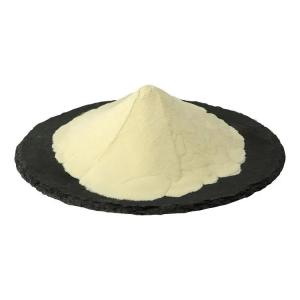News list
News Center
Hot Product
News
Phosphoric acid and its role in global diets
Time:2025-10-22
1. Introduction
Phosphoric acid (H₃PO₄) is a widely used inorganic acid that plays a significant role in modern food production and global dietary patterns. It serves as an essential additive in a variety of processed foods and beverages, contributing to their stability, flavor, and preservation. Beyond the food industry, phosphoric acid also has links to agriculture, as it is derived from phosphate minerals that are crucial for plant and animal nutrition.
2. Chemical Nature and Production
Phosphoric acid is a colorless, odorless, and moderately strong acid that can be produced through two main industrial methods: the wet process and the thermal process.
The wet process involves treating phosphate rock with sulfuric acid to yield phosphoric acid and gypsum.
The thermal process, on the other hand, produces a purer form by burning elemental phosphorus in air and hydrating the resulting phosphorus pentoxide.
Both methods ensure a steady supply of phosphoric acid for food-grade and industrial applications.
3. Applications in the Food Industry
In food manufacturing, phosphoric acid is primarily used as an acidulant, pH regulator, and flavor enhancer. It provides the tangy taste found in many carbonated beverages and helps maintain the desired acidity in processed foods such as jams, cheese, and baked goods. It is also a component in certain leavening agents and emulsifiers, ensuring product consistency and shelf stability.
4. Presence in Beverages and Processed Foods
Phosphoric acid is most famously associated with soft drinks, where it imparts a sharp, refreshing acidity that balances sweetness. It is also used in energy drinks, flavored waters, and dairy products to adjust pH and prevent microbial growth. In global diets, this has made phosphoric acid one of the most commonly consumed food additives, particularly in urbanized regions with high intake of processed foods.
5. Contribution to Nutrient Cycles
Beyond its direct role in food processing, phosphoric acid is indirectly vital to human diets through its agricultural importance. Phosphate compounds derived from phosphoric acid are key ingredients in fertilizers, which promote healthy crop growth. This connection between agriculture and food production highlights phosphoric acid’s role in supporting the global food supply chain.
6. Global Trends and Regulations
Internationally, phosphoric acid is regulated as a food additive by agencies such as the U.S. Food and Drug Administration (FDA) and the European Food Safety Authority (EFSA). Its use is generally recognized as safe when applied within established limits. As global dietary habits shift toward processed and convenience foods, phosphoric acid continues to be a central component in food technology and manufacturing.
7. Conclusion
Phosphoric acid has become an indispensable element in the modern food system, influencing both the taste and structure of products consumed worldwide. From beverage formulation to agricultural productivity, its versatility ensures that it remains an integral part of global diets. Understanding its production, application, and regulation offers valuable insight into how chemistry supports the global food landscape.
Phosphoric acid (H₃PO₄) is a widely used inorganic acid that plays a significant role in modern food production and global dietary patterns. It serves as an essential additive in a variety of processed foods and beverages, contributing to their stability, flavor, and preservation. Beyond the food industry, phosphoric acid also has links to agriculture, as it is derived from phosphate minerals that are crucial for plant and animal nutrition.
2. Chemical Nature and Production
Phosphoric acid is a colorless, odorless, and moderately strong acid that can be produced through two main industrial methods: the wet process and the thermal process.
The wet process involves treating phosphate rock with sulfuric acid to yield phosphoric acid and gypsum.
The thermal process, on the other hand, produces a purer form by burning elemental phosphorus in air and hydrating the resulting phosphorus pentoxide.
Both methods ensure a steady supply of phosphoric acid for food-grade and industrial applications.
3. Applications in the Food Industry
In food manufacturing, phosphoric acid is primarily used as an acidulant, pH regulator, and flavor enhancer. It provides the tangy taste found in many carbonated beverages and helps maintain the desired acidity in processed foods such as jams, cheese, and baked goods. It is also a component in certain leavening agents and emulsifiers, ensuring product consistency and shelf stability.
4. Presence in Beverages and Processed Foods
Phosphoric acid is most famously associated with soft drinks, where it imparts a sharp, refreshing acidity that balances sweetness. It is also used in energy drinks, flavored waters, and dairy products to adjust pH and prevent microbial growth. In global diets, this has made phosphoric acid one of the most commonly consumed food additives, particularly in urbanized regions with high intake of processed foods.
5. Contribution to Nutrient Cycles
Beyond its direct role in food processing, phosphoric acid is indirectly vital to human diets through its agricultural importance. Phosphate compounds derived from phosphoric acid are key ingredients in fertilizers, which promote healthy crop growth. This connection between agriculture and food production highlights phosphoric acid’s role in supporting the global food supply chain.
6. Global Trends and Regulations
Internationally, phosphoric acid is regulated as a food additive by agencies such as the U.S. Food and Drug Administration (FDA) and the European Food Safety Authority (EFSA). Its use is generally recognized as safe when applied within established limits. As global dietary habits shift toward processed and convenience foods, phosphoric acid continues to be a central component in food technology and manufacturing.
7. Conclusion
Phosphoric acid has become an indispensable element in the modern food system, influencing both the taste and structure of products consumed worldwide. From beverage formulation to agricultural productivity, its versatility ensures that it remains an integral part of global diets. Understanding its production, application, and regulation offers valuable insight into how chemistry supports the global food landscape.


 CN
CN





